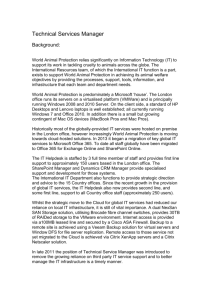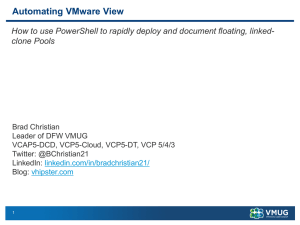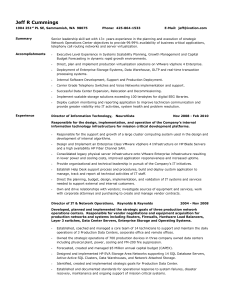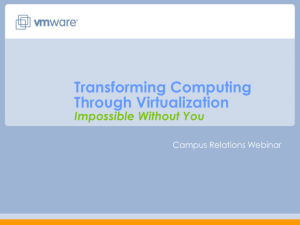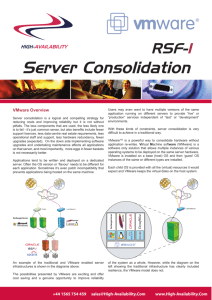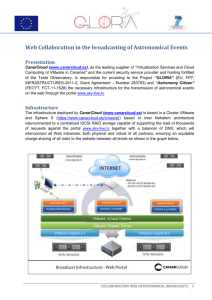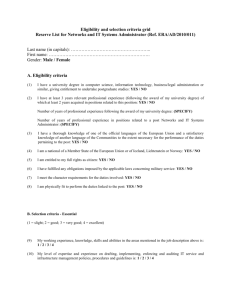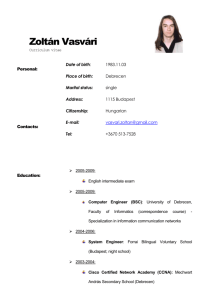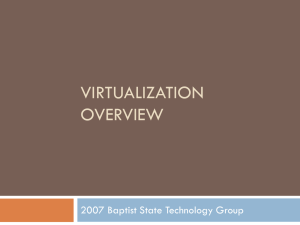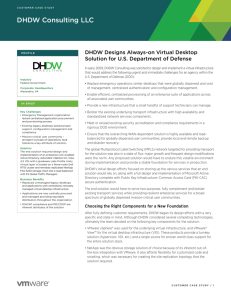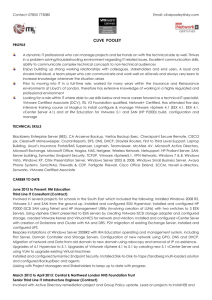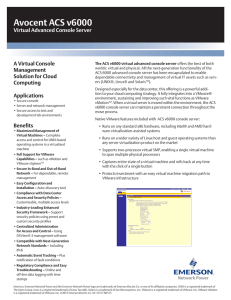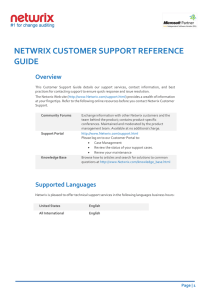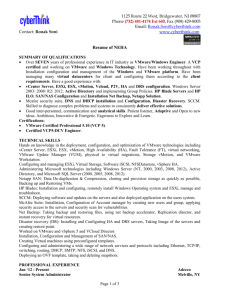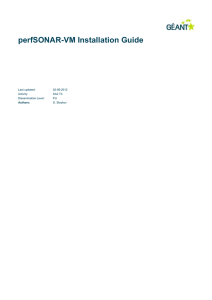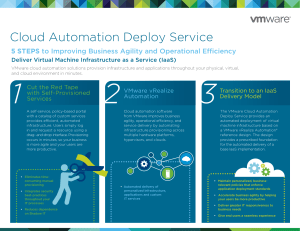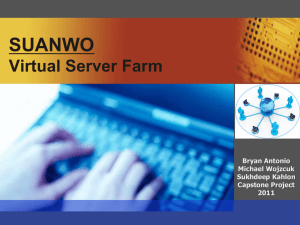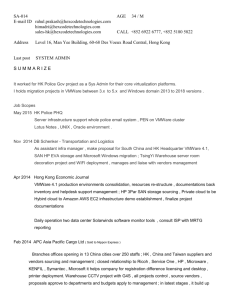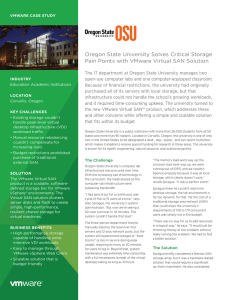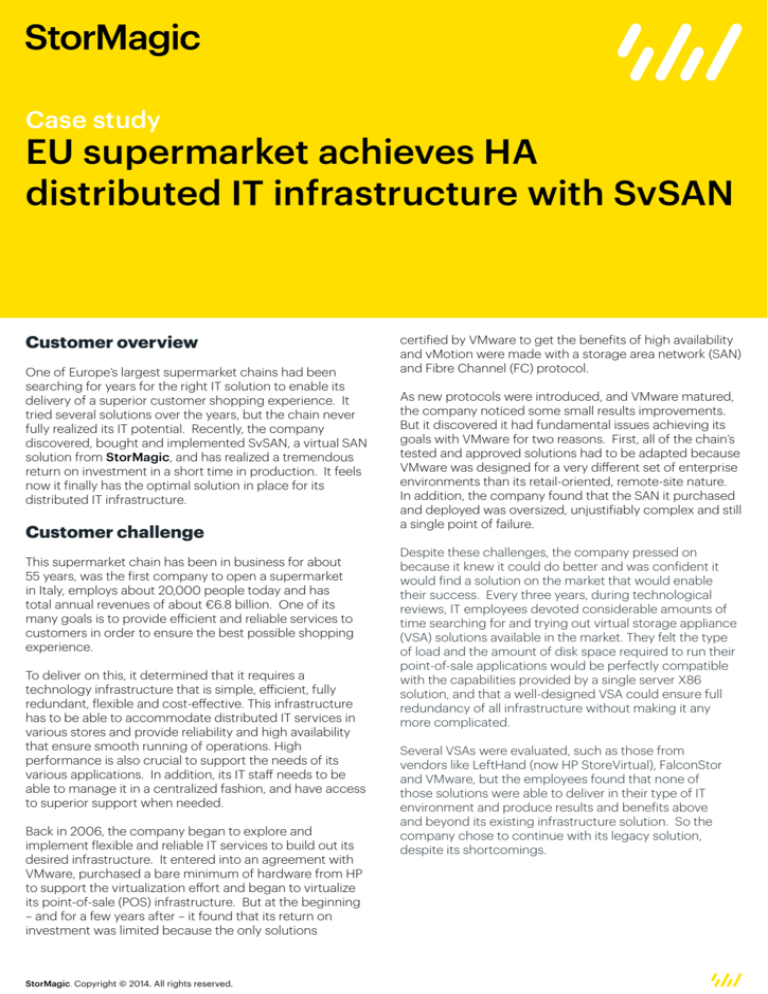
Case study
EU supermarket achieves HA
distributed IT infrastructure with SvSAN
Customer overview
One of Europe’s largest supermarket chains had been
searching for years for the right IT solution to enable its
delivery of a superior customer shopping experience. It
tried several solutions over the years, but the chain never
fully realized its IT potential. Recently, the company
discovered, bought and implemented SvSAN, a virtual SAN
solution from StorMagic, and has realized a tremendous
return on investment in a short time in production. It feels
now it finally has the optimal solution in place for its
distributed IT infrastructure.
Customer challenge
This supermarket chain has been in business for about
55 years, was the first company to open a supermarket
in Italy, employs about 20,000 people today and has
total annual revenues of about €6.8 billion. One of its
many goals is to provide efficient and reliable services to
customers in order to ensure the best possible shopping
experience.
To deliver on this, it determined that it requires a
technology infrastructure that is simple, efficient, fully
redundant, flexible and cost-effective. This infrastructure
has to be able to accommodate distributed IT services in
various stores and provide reliability and high availability
that ensure smooth running of operations. High
performance is also crucial to support the needs of its
various applications. In addition, its IT staff needs to be
able to manage it in a centralized fashion, and have access
to superior support when needed.
Back in 2006, the company began to explore and
implement flexible and reliable IT services to build out its
desired infrastructure. It entered into an agreement with
VMware, purchased a bare minimum of hardware from HP
to support the virtualization effort and began to virtualize
its point-of-sale (POS) infrastructure. But at the beginning
– and for a few years after – it found that its return on
investment was limited because the only solutions
StorMagic. Copyright © 2014. All rights reserved.
certified by VMware to get the benefits of high availability
and vMotion were made with a storage area network (SAN)
and Fibre Channel (FC) protocol.
As new protocols were introduced, and VMware matured,
the company noticed some small results improvements.
But it discovered it had fundamental issues achieving its
goals with VMware for two reasons. First, all of the chain’s
tested and approved solutions had to be adapted because
VMware was designed for a very different set of enterprise
environments than its retail-oriented, remote-site nature.
In addition, the company found that the SAN it purchased
and deployed was oversized, unjustifiably complex and still
a single point of failure.
Despite these challenges, the company pressed on
because it knew it could do better and was confident it
would find a solution on the market that would enable
their success. Every three years, during technological
reviews, IT employees devoted considerable amounts of
time searching for and trying out virtual storage appliance
(VSA) solutions available in the market. They felt the type
of load and the amount of disk space required to run their
point-of-sale applications would be perfectly compatible
with the capabilities provided by a single server X86
solution, and that a well-designed VSA could ensure full
redundancy of all infrastructure without making it any
more complicated.
Several VSAs were evaluated, such as those from
vendors like LeftHand (now HP StoreVirtual), FalconStor
and VMware, but the employees found that none of
those solutions were able to deliver in their type of IT
environment and produce results and benefits above
and beyond its existing infrastructure solution. So the
company chose to continue with its legacy solution,
despite its shortcomings.
The SvSAN solution and new hardware
configuration would save the company
€1 million in lower purchase costs and
energy savings
The solution
At the end of 2012, during the IT team’s latest search for
new possible VSAs, it found StorMagic and SvSAN. They
carefully evaluated the solution in its laboratories and were
immediately convinced of its legitimacy and value. SvSAN
enabled the team to implement the solution using only
two servers. A centralized quorum eliminated the need
for a third witness at each point of sale. SvSAN delivered
a centralized management model leveraging integration
with VMware vCenter to ensure the infrastructure would
be simple and scalable enough for the company’s highly
distributed environment. Also, deploying SvSAN was
simple and automated, enabling IT staff to handle the
job easily without involving any storage specialists. As a
result, they chose to test SvSAN in 10 stores for a couple of
months.
At the same time, the team negotiated with the
company’s hardware suppliers to accommodate the new
configuration the solution required and go from three
devices (two servers and one SAN) to two – a significant
hardware savings that SvSAN enables. After negotiations
were complete, they produced a business case and
proved to the chain’s CIO and CTO that they would see
an immediate return on investment with SvSAN instead
of its legacy solution. The new solution would enable
the efficient, fully redundant, flexible and cost-effective
environment the company required. The single-pointof-failure environment it had been operating in would be
eliminated while satisfying design and operational goals
and performing better than traditional hardware solutions.
Centralized deployment and management of the entire
infrastructure would be enabled, and updates integrated
without any operational disruption.
In addition, within four years, the SvSAN solution and
new hardware configuration would save the company €1
million due to lower purchase costs and energy savings.
Based on these figures and the results from the in-store
tests, approvals were quickly granted for the purchase and
deployment of SvSAN across the chain’s infrastructure.
Deployment & integration
As of the end of October 2013, 30 of the chain’s stores
have SvSAN in production and are served by the new IT
infrastructure it enables. In 2014, 35 more stores will come
StorMagic. Copyright © 2014. All rights reserved.
online with SvSAN, and 35-40 more stores will go into
production in each successive year. In the meantime, the
company is using SSD technology in place of conventional
disks to speed the adoption of StorMagic in other
corporate IT environments.
Additionally, the company is re-thinking how it delivers
back-end storage for particular applications and use
cases using software solutions instead of hardware. For
example, whenever it needs high performance (loads
such as Oracle) spread across geographic locations or
available storage in environments that it wants to isolate
from its datacenter infrastructure, IT employees now
deploy StorMagic’s SvSAN equipped with SSD disks. This
can be done instead of deploying much more expensive
“traditional” solutions such as NetApp MetroCluster or
other synchronous replication solutions between two
traditional storage systems, as the company had
been doing for years. The first of these SvSAN/SSD
deployments is now live, and supports the company’s
meat packing operation. It has already delivered a
six-fold improvement in application efficiency with no
single point of failure in the environment, and is expected
to also deliver these and additional results with the added
benefit of consolidating four servers to two. This will
allow the company to re-allocate dollars from purchasing
additional servers to tackling other pressing business
priorities.
Throughout the process, the company’s IT team has stated
that StorMagic’s technical support is superior to other IT
vendors and fantastic in all aspects. They even joke that
they are sincerely grateful to StorMagic for developing
such a great software solution, because it will save them
the physical labor that goes along with transporting and
installing a SAN solution into the small space where their
store datacenters are located.
About StorMagic
Established in 2006, StorMagic is a leading provider of
enterprise-class software-defined storage for one to many
lean IT environments. It delivers shared storage through
SvSAN, a software solution which enables enterprises
to eliminate downtime and ensure high availability of
business critical applications at remote sites where
disruptions directly equate to losses in revenue and
service.

